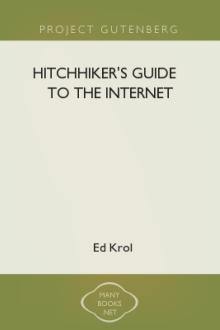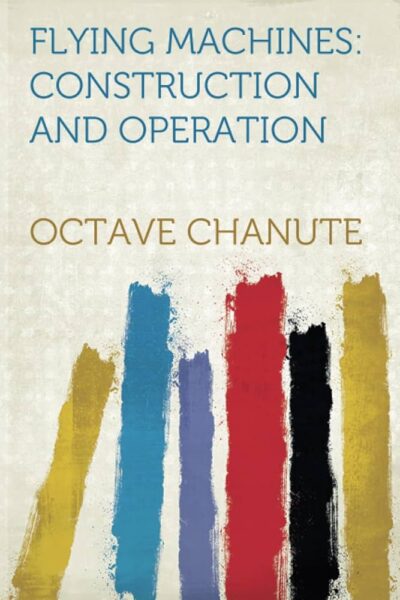46 Results with the "Science" genre
Adventure Fiction (1164)
Biography (435)
Business & Finance (1)
Children's Literature (124)
Comics (6)
Culture (51)
Drama (123)
Dystopian (29)
Fable (86)
Fantasy (1132)
Fantasy (203)
Fiction (1010)
Finance (1)
Gothic Fiction (12)
Historical Fiction (615)
History (122)
Horror (56)
Lifestyle (36)
Literary (404)
Literary Fiction (207)
Memoir (113)
Mystery (422)
Non-fiction (87)
Novel (549)
Paranormal Fiction (96)
Philosophical (182)
Philosophy (45)
Poetry (249)
Political Fiction (14)
Politics (42)
Practical (32)
Psychological (4)
Psychological Thriller (108)
Relationship (6)
Romance Novel (716)
Romantic Melodrama (14)
Satire (91)
Science Fiction (345)
Self-help (68)
Society (65)
Society (2)
Spiritual Growth (1)
story (2)
Thriller (704)
True Crime (56)
view (11)
Women's Fiction (2)
Young Adult (233)
-
Chapter
Trust Issues
 Trust Issues in the internet’s operational framework have grown more pronounced as the network has expanded beyond its original controlled environment. Initially, under DARPA’s stewardship, the network’s integrity depended on mutual trust among a small, centralized group of gateways. These systems shared routing information freely, under the assumption that all parties were both competent and cooperative. But with the emergence of independent administrative domains and multiple wide area networks,…
Trust Issues in the internet’s operational framework have grown more pronounced as the network has expanded beyond its original controlled environment. Initially, under DARPA’s stewardship, the network’s integrity depended on mutual trust among a small, centralized group of gateways. These systems shared routing information freely, under the assumption that all parties were both competent and cooperative. But with the emergence of independent administrative domains and multiple wide area networks,…-
34.4 K • Ongoing
-
-
Chapter
Trailers
 Trailers mark an intriguing yet underutilized aspect of internet data handling. In a networked system, as data travels between applications and devices, it's divided into manageable chunks, known as packets. Each packet contains a header at the beginning, which includes addressing and routing information essential for delivery. Trailers, in theory, were designed to supplement this by placing additional control information at the end of packets. Their role was to enhance data handling efficiency by…
Trailers mark an intriguing yet underutilized aspect of internet data handling. In a networked system, as data travels between applications and devices, it's divided into manageable chunks, known as packets. Each packet contains a header at the beginning, which includes addressing and routing information essential for delivery. Trailers, in theory, were designed to supplement this by placing additional control information at the end of packets. Their role was to enhance data handling efficiency by…-
34.4 K • Ongoing
-
-
 The Hitchhiker's Guide to the Internet by Stephen McLaughlin is a playful, informative book that serves as a guide to the early days of the internet, offering readers practical advice and humorous insights on how to navigate the online world, connect with others, and make the most of emerging digital technologies.
The Hitchhiker's Guide to the Internet by Stephen McLaughlin is a playful, informative book that serves as a guide to the early days of the internet, offering readers practical advice and humorous insights on how to navigate the online world, connect with others, and make the most of emerging digital technologies.-
4.9 K • Nov 8, '24
-
4.6 K • Nov 8, '24
-
4.3 K • Nov 8, '24
-
-
Chapter
RFCs
 RFCs serve as the architectural blueprints of the internet, shaping the way systems communicate and evolve. Initially, they were simple memos exchanged by a tight-knit group of researchers. Today, they form a globally recognized documentation system that governs internet protocols, innovations, and standards. Every protocol that allows your browser to talk to a website or your email client to fetch messages is based on one or more of these documents. Their legacy lies not just in what they define, but how…
RFCs serve as the architectural blueprints of the internet, shaping the way systems communicate and evolve. Initially, they were simple memos exchanged by a tight-knit group of researchers. Today, they form a globally recognized documentation system that governs internet protocols, innovations, and standards. Every protocol that allows your browser to talk to a website or your email client to fetch messages is based on one or more of these documents. Their legacy lies not just in what they define, but how…-
34.4 K • Ongoing
-
-
Chapter
Operating the Internet
 Operating the Internet served as a fundamental experience in the early digital age, where users engaged with systems like BSD to access crucial documents. Unlike today’s browser-based ease, interactions were reliant on terminal commands and a structured understanding of protocols like Telnet and FTP. Retrieving a file such as NETINFO:NUG.DOC, known as The Users Guide to the ARPAnet, involved connecting to servers like sri-nic.arpa via telnet before transitioning into an FTP session for downloading the…
Operating the Internet served as a fundamental experience in the early digital age, where users engaged with systems like BSD to access crucial documents. Unlike today’s browser-based ease, interactions were reliant on terminal commands and a structured understanding of protocols like Telnet and FTP. Retrieving a file such as NETINFO:NUG.DOC, known as The Users Guide to the ARPAnet, involved connecting to servers like sri-nic.arpa via telnet before transitioning into an FTP session for downloading the…-
34.4 K • Ongoing
-
-
 Notable Cross-Country Flights of 1911 brought aviation to the forefront of technological and human achievement, as pilots tested not just machines but their own endurance across vast landscapes. One of the year’s most dramatic highlights was Orville Wright’s flight at Killdevil Hills, where he remained aloft for over ten minutes despite strong winds. This feat demonstrated the increasing control and stability of powered flight. While Wright’s contribution remained largely experimental, many aviators…
Notable Cross-Country Flights of 1911 brought aviation to the forefront of technological and human achievement, as pilots tested not just machines but their own endurance across vast landscapes. One of the year’s most dramatic highlights was Orville Wright’s flight at Killdevil Hills, where he remained aloft for over ten minutes despite strong winds. This feat demonstrated the increasing control and stability of powered flight. While Wright’s contribution remained largely experimental, many aviators…-
142.7 K • Ongoing
-
-
Chapter
Gated
 Gated represents a key shift in internet routing, designed to address the fragmentation created by disparate routing protocols. As the early internet evolved, multiple networks operated with their own routing systems—such as RIP for campus environments and Hello for NSFnet—each optimized for localized needs but ill-equipped to scale seamlessly across a broader architecture. To bridge these inconsistencies, Gated (short for “Gateway Daemon”) was developed as a flexible routing software capable of…
Gated represents a key shift in internet routing, designed to address the fragmentation created by disparate routing protocols. As the early internet evolved, multiple networks operated with their own routing systems—such as RIP for campus environments and Hello for NSFnet—each optimized for localized needs but ill-equipped to scale seamlessly across a broader architecture. To bridge these inconsistencies, Gated (short for “Gateway Daemon”) was developed as a flexible routing software capable of…-
34.4 K • Ongoing
-
-
 Chapter XXVIII-Flying Machines: Construction and Operation functions as an essential lexicon for anyone seeking clarity in the evolving language of aviation. It begins by introducing foundational terms that outline the scope of aerial engineering, such as “Aerodrome,” described not as a place, but as a mechanical entity intended to operate within the sky’s domain. The entry sets the tone for what follows: a clear, structured breakdown of language specific to flying machine technology. “Aerofoil”…
Chapter XXVIII-Flying Machines: Construction and Operation functions as an essential lexicon for anyone seeking clarity in the evolving language of aviation. It begins by introducing foundational terms that outline the scope of aerial engineering, such as “Aerodrome,” described not as a place, but as a mechanical entity intended to operate within the sky’s domain. The entry sets the tone for what follows: a clear, structured breakdown of language specific to flying machine technology. “Aerofoil”…-
142.7 K • Ongoing
-
-
 Chapter XXVI-Flying Machines Construction And Operation offers a focused look into the evolution of early aviation, particularly the gradual but notable shift in American aircraft design. While biplanes had dominated the scene for years, interest in monoplanes began to rise, especially following the success of Curtiss and others at the 1910 International meet at Belmont Park. Though American entries in the monoplane class were limited, Curtiss's own single-wing creation drew considerable attention. His…
Chapter XXVI-Flying Machines Construction And Operation offers a focused look into the evolution of early aviation, particularly the gradual but notable shift in American aircraft design. While biplanes had dominated the scene for years, interest in monoplanes began to rise, especially following the success of Curtiss and others at the 1910 International meet at Belmont Park. Though American entries in the monoplane class were limited, Curtiss's own single-wing creation drew considerable attention. His…-
142.7 K • Ongoing
-
-
 Chapter XXV-Flying Machines Construction And Operation reflects a pivotal moment in aviation where advancements in engine technology significantly reshaped aircraft design. In the time since this book's initial release in 1910, rapid progress in motor development allowed for aircraft to operate with far smaller wing surfaces than before. This shift stemmed from both a drop in engine weight and an increase in engine power, enabling planes to achieve higher speeds while requiring less lift-generating area.…
Chapter XXV-Flying Machines Construction And Operation reflects a pivotal moment in aviation where advancements in engine technology significantly reshaped aircraft design. In the time since this book's initial release in 1910, rapid progress in motor development allowed for aircraft to operate with far smaller wing surfaces than before. This shift stemmed from both a drop in engine weight and an increase in engine power, enabling planes to achieve higher speeds while requiring less lift-generating area.…-
142.7 K • Ongoing
-
- 1 2 … 5 Next
